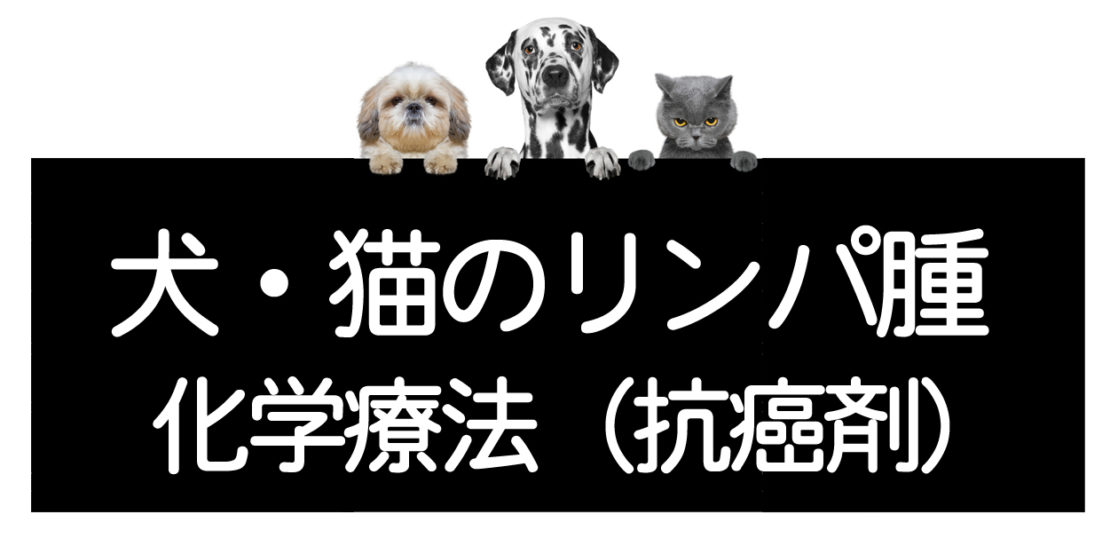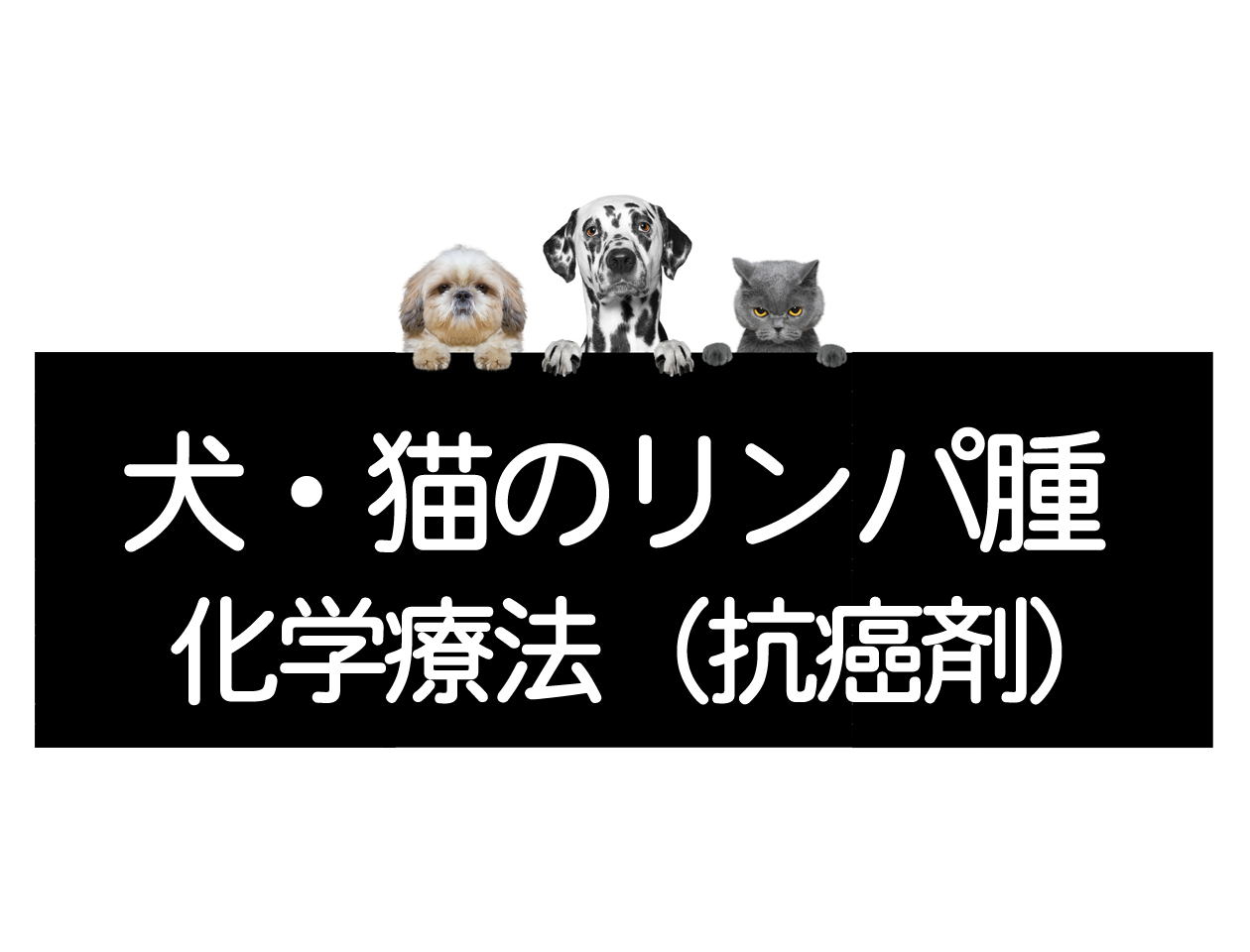### About Protocols
The chemotherapy drugs used for canine malignant lymphoma were originally developed for humans. The combinations of these drugs also follow human treatment protocols. The administration of each chemotherapy drug is based on treatment plans documented in past clinical trials. These documents are referred to as “protocols” and are frequently used in the treatment of canine malignant lymphoma.
You may have heard of the term regimen, which is a similar concept. Regimen refers to the actual treatment plans implemented in practice. Some well-known protocols that involve the combination of multiple chemotherapy drugs include the “CHOP protocol,” “COP protocol,” and “Wisconsin-Madison Protocol (UW-M).”
## Protocols for Canine and Feline Lymphoma
Chemotherapy treatment for canine and feline lymphoma is standardized regarding combinations, dosages, and schedules, which are collectively called “protocols.”
The main protocols primarily used are as follows:
### Types of Protocols
1. COP Protocol – for canine and feline lymphoma
2. CHOP Protocol – for canine and feline lymphoma
3. UW-M Protocol – for canine and feline lymphoma
### COP Protocol – Canine and Feline Lymphoma
The COP protocol is a basic multi-drug combination therapy widely used before the CHOP protocol was established.
In cases of multicentric lymphoma, the remission rate is 60-70%, with a median survival time of about six months.
– **C**yclophosphamide
– **O**ncovin (vincristine)
– **P**rednisolone
This protocol is named “COP” based on the initials of these drugs.
### CHOP Protocol – Canine and Feline Lymphoma
The CHOP protocol adds **doxorubicin (H: hydroxydaunorubicin)** to the COP protocol. The addition of doxorubicin is believed to provide an even better therapeutic effect.
In cases of multicentric lymphoma, the remission rate is 80-90%, with a median survival time of about one year.
UM-W Protocol – Lymphoma in Dogs and Cats
This protocol was developed at the University of Wisconsin-Madison and adds L-asparaginase to CHOP. It is used as a maintenance therapy protocol.
The remission rate and median survival are similar to those of the CHOP protocol.
Since it is a 25-week protocol, there may be cases where it must be discontinued due to side effects, etc.
Chlorambucil and Prednisolone – Lymphoma in Cats
For low-grade gastrointestinal lymphoma in cats, a combination of chlorambucil and prednisolone is optimal.
While ideally, these protocols should be completed in their entirety, there are many cases where severe side effects occur, making continuation impossible.
The purpose of using chemotherapy is ultimately to relieve symptoms caused by the tumor and improve and maintain QOL (Quality of Life). Therefore, while following the protocol, make sure to monitor whether your pet’s QOL is being maintained.
Below are the main types of chemotherapy drugs used and their actions and side effects.
Types of Chemotherapy Drugs
Cyclophosphamide
Brand Name: Endoxan
Administered orally or intravenously.
This chemotherapy drug inhibits DNA synthesis, thereby suppressing tumor cell growth. It is used in the CHOP, COP, and UW-M protocols.
Side effects: Gastrointestinal toxicity, bone marrow toxicity, aseptic hemorrhagic cystitis
Vincristine
Brand Name: Oncovin
Administered intravenously.
This chemotherapy drug inhibits the formation of the microtubule structure in cells and is used in the CHOP and UM-W protocols. It is rarely used alone and is typically combined with other drugs. Leakage around the blood vessels can cause severe dermatitis.
Side effects: Gastrointestinal toxicity, bone marrow toxicity, peripheral neuropathy (leading to hind limb weakness, difficulty in urination, etc.)
Doxorubicin
Brand Name: Adriamycin, Doxorubicin
Administered intravenously.
This drug inhibits crucial enzymes involved in the formation of the double-helix structure of DNA, thereby suppressing the growth of lymphoma cells. Recently, it is considered the most effective drug in animal chemotherapy protocols and is used in the CHOP and UM-W protocols. Leakage around the blood vessels can cause severe skin necrosis, sometimes leading to non-healing wounds.
Side effects: Gastrointestinal toxicity, severe bone marrow toxicity, nephrotoxicity (in cats)
※Doxorubicin can cause severe toxicity in Collies, Shetland Sheepdogs (Shelties), and cats, so caution is required when using it.
In cats with kidney disorders, mitoxantrone is used instead of doxorubicin.
L-Asparaginase
Brand Name: Leunase
Administered subcutaneously (Some experts recommend intramuscular administration).
This chemotherapy drug works by breaking down asparagine, an amino acid needed for tumor cell growth, thereby causing nutrient deficiency and cell death.
This medication has relatively few side effects, but repeated administration can cause anaphylaxis, so caution is needed.
(As a precaution, antihistamines are sometimes pre-administered 15 to 30 minutes before the injection.)
While it may be effective when used alone, tumor cells are known to quickly develop resistance to L-asparaginase, making subsequent treatments crucial.
Side effect: Anaphylactic reactions
CCNU
Product name: Lomustine
This medication is administered orally.
It is an anticancer drug that suppresses tumor cell growth by inhibiting DNA synthesis. It is used for lymphomas, mast cell tumors, histiocytic disorders, and, because it can cross the blood-brain barrier, brain tumors.
Side effects: Gastrointestinal toxicity, bone marrow toxicity, and it may cause liver failure with continued treatment.
Methotrexate
Product name: Methotrexate
This medication is administered orally or intravenously.
It is a folic acid antagonist that inhibits the enzymes involved in the synthesis of DNA and RNA within cells, thereby suppressing the growth of cancer cells.
Side effects: Bone marrow toxicity, damage to the intestinal epithelium
Actinomycin
Product names: Cosmegen, Dactinomycin
This medication is administered intravenously.
By binding to DNA and inhibiting RNA synthesis, it stops the growth of cancer cells and tends to remain within tumor cells. If it leaks around blood vessels, it can cause severe skin necrosis.
Side effects: Gastrointestinal toxicity, bone marrow toxicity
Chlorambucil (not approved in Japan)
Product names: Chlorambucil, Leukeran
This medication is administered orally.
It is an anticancer drug that inhibits the growth of tumor cells by blocking DNA synthesis. It may be used in cases where cyclophosphamide causes sterile hemorrhagic cystitis or poses a high risk for such conditions.
Side effects: Gastrointestinal toxicity, bone marrow toxicity, neurological symptoms
Melphalan
Product name: Alkeran
This medication is administered orally.
It is an anticancer drug that suppresses the growth of tumor cells by inhibiting DNA synthesis, and is occasionally used together with prednisolone for plasma cell tumors (MP therapy).
Side effects: Gastrointestinal toxicity, bone marrow toxicity, liver toxicity
Cytarabine
Product name: Cytosar-U
This medication is administered subcutaneously, intravenously, or intrathecally.
It is one of the most commonly used anticancer drugs in the United States. It inhibits DNA synthesis and suppresses tumor cell growth by converting into a pyrimidine analogue known as cytarabine triphosphate within cells. Because it can cross the blood-brain barrier, it is also used for brain tumors.
Side effects: Gastrointestinal toxicity, bone marrow toxicity, liver toxicity, Cytarabine syndrome (fever, muscle pain, bone pain, conjunctivitis, maculopapular rash, etc.)
Gastrointestinal toxicity: Stomatitis, vomiting, diarrhea, bloody stools, constipation, etc.
Liver toxicity: Increase in GOT, GPT, γ-GPT, bilirubin due to liver damage.
Kidney toxicity: Increase in BUN (blood urea nitrogen), Cre (creatinine) due to kidney damage.
Neurological symptoms: Numbness, paralysis, pain, taste abnormalities, smell abnormalities, etc.
Additionally, despite being labeled as anticancer drugs, they also possess ‘carcinogenic’ properties, posing the risk of causing tumors other than lymphomas.
As mentioned at the beginning, the purpose of using anticancer drugs is to ‘ameliorate symptoms caused by tumors and maintain quality of life (QOL)’. If tumor shrinkage or remission is seen, but QOL is diminished due to side effects, the treatment’s benefit is lost.
Switch to a ‘low-carb, high-protein diet’ to build strength without providing nutrients to the tumor, which will help sustain physical condition and avoid treatment discontinuation due to side effects.
At our laboratory, we are studying whether administering Cordy along with domestically produced SPF pork placenta extract powder to protect liver function can help restore immune strength.
In essence, the immune system is the primary force in cancer suppression, and chemotherapy is merely a supplementary aid.
Please proactively engage in immune system support measures.
Our laboratory believes that a combination of treatments that take the best of each approach holds potential.
Relying solely on chemotherapy is clearly insufficient. It is important to combine other complementary treatments.
We urge you to fully understand the information about chemotherapy. Please take a look at the following articles:
- Chemotherapeutic Drugs Used for Cancer Treatment in Dogs and Cats – Side Effects and Precautions
- Molecular Targeted Therapies Used for Cancer Treatment in Dogs and Cats
- Types and Protocols of Chemotherapy and Chemotherapeutic Drugs Used for Lymphoma in Dogs and Cats
- Low-Dose Exposure to Chemotherapeutic Drugs – Precautions During Pet Cancer Treatment
- Why 90% of Chemotherapeutic Drug Side Effects Manifest
- Considering Chemotherapy for Dogs and Cats – What Are the Risks of Side Effects?
The Power of Immunity in Countering Chemotherapy Side Effects
Undergoing chemotherapy almost inevitably comes with side effects.
Even if the cancer shrinks, it does not mean that the quality of life for your dogs or cats can be maintained if they become lethargic from the side effects.
At the Cordy Laboratory, we are researching whether the administration of Cordy can enhance immune strength and reduce side effects or aid quicker recovery from the damage caused by side effects. Additionally, since chemotherapy poses a risk of liver function decline, we are investigating whether combining Cordy with domestically produced SPF pork placenta extract powder can help care for liver function and improve quality of life (QOL).
If you have any questions, please contact us.
※We are also researching the application of Cordy, a specific species of Cordyceps with immune-modulating functions, for human use.
[Supervisor Box]






